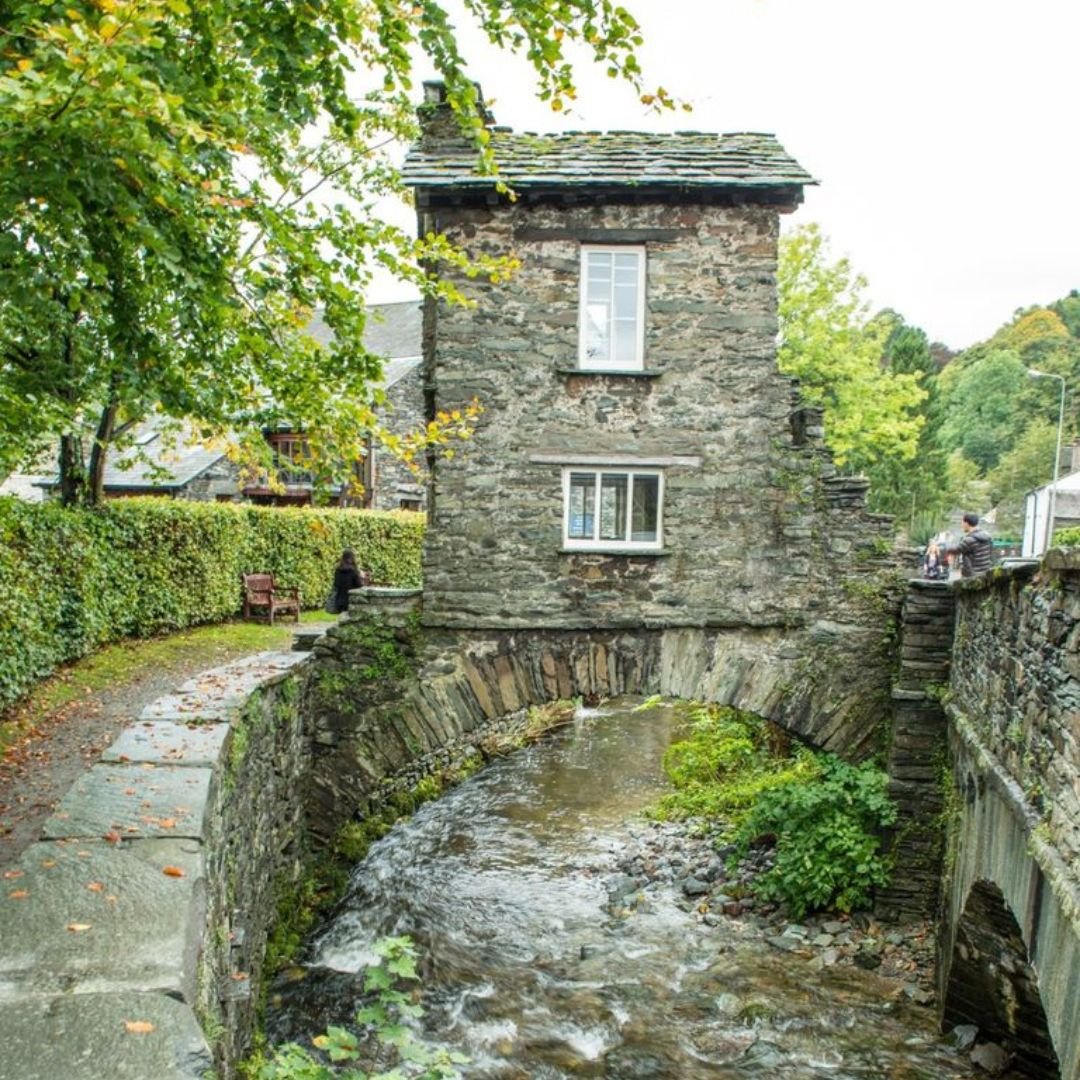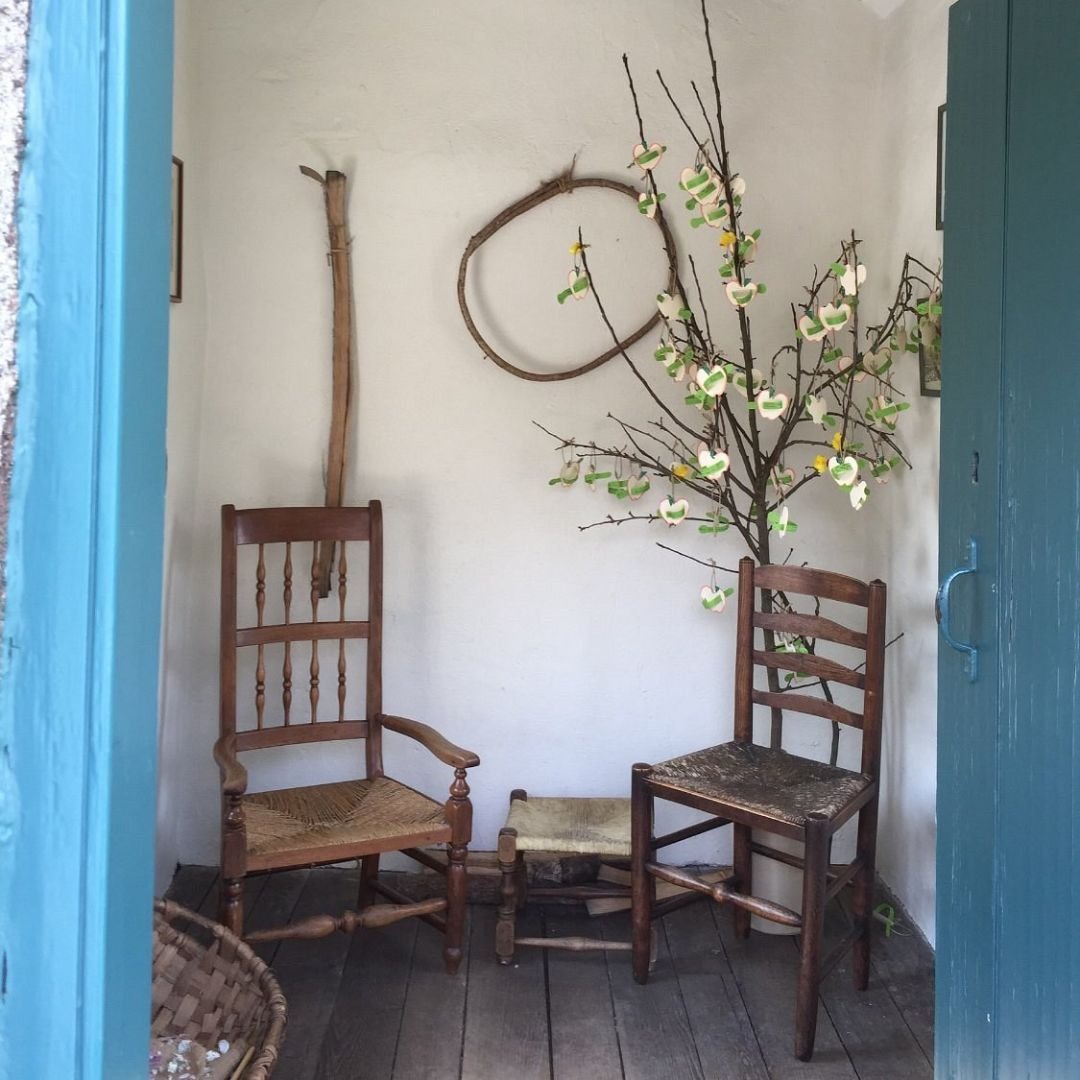The Lake District Bridge House in Ambleside
This unique house in Ambleside, in the Lake District, was put on a bridge to avoid land tax!
Bridge House is probably the most photographed building in the Lake District.
The tiny building, originally an apple store for nearby Ambleside Hall, was built over Stock Beck in the 17th century to avoid land tax!
An influential family, The Braithwaites, built Bridge House to access their lands on the other side of Stock Beck and also to store apples from their orchards, which surrounded Bridge House.
It’s thought that the humpbacked bridge predates the house by several centuries.
Bridge House previously had doors opening onto each bank so people could pass directly through the house and cross over the beck below.
The rear door was later blocked and a chimney inserted but you can see traces of the original 17th-century doorway.
Over the decades, the house has had many practical uses, include being used as a counting house for the mills of Rattle Ghyll, a tea-room, a weaving shop and a cobbler's.
Most surprisingly, it was also used as a dwelling, with records showing a family of eight living here at one time!
In the 1920s, the residents of Ambleside recognised that Bridge House was in need of repair and began fundraising.
This small group included the wife of National Trust founder Hardwicke Rawnsley, Edith Fletcher; William Wordsworth’s grandson, Gordon Wordsworth; and Beatrix Potter’s husband, William Heelis.
They showed tremendous foresight in securing not only the safety of this monument, but also the aesthetics of the area.
It was a great display of public action and conservation.
By the end of the project in 1926, they raised a grand total of £1,244 to buy Bridge House and donated it to the National Trust, thereby securing its future.
The Trust now opens Bridge House on selected days during the year - it’s usually open from 11.30am to 4.30pm during the spring, summer and autumn.
The ground-level room has a cast-iron range against one wall, inserted in the Victorian period, the fireplace occupies the space where the original 17th-century doorway used to be.
There are a pair of rush-seat chairs and a traditional woven basket on the floor with several sets of clogs.
Tucked into the wall space behind the door is a tall cupboard. There are small windows on both sides, overlooking the beck.
The curving external stair, made of stone and slate, leads to the first-floor chamber. This has two rush-seat chairs against the far wall, a traditional woven basket on the floor, and a small table on one side.
Ambleside church
The walls are lined with examples of basket weaving tools and materials, showing how basket and chair makers like John Rigg worked and the materials they used.
The iconic structure has also inspired artists and writers for several years.
It was quoted that it was ‘one which every artist sketches as he passes by’ and the most famous artist to sketch it was JMW Turner.
One of Ambleside’s most famous residents Harriet Martineau moved into “The Knoll” house nearby.
She wrote a travel guide to the Lake District and mentioned the house as “the odd little grey dwelling … is the ancient house which is considered the most curious relic in Ambleside of the olden time.”
Lewis Pinhorn Wood painted the Bridge House in the 19th century and named it “The Cobblers Shop on the Bridge”.
Someone who recently visited the Bridge House said: “Beautiful and enchanting. A tiny downstairs and upstairs. The National Trust guide was enthusiastic and informative. We love this little building.”
Another person added: “When we first arrived there was a note saying the curator was having lunch, back at 2.10pm.
”So we dutifully returned and that’s worth doing because you will learn a lot. It spans Stock Beck and has its origins in the 17th century - beautiful interior.
”Now managed by the National Trust and definitely worthy seeing.”
Although it is a small attraction, it does get incredibly busy in the summer months with tourists visiting the area.
There are only two small rooms spread across two floors that are both accessible by an outside stone staircase.
So, it could take less than ten minutes to visit. But, just be aware you may have to wait your turn in a queue if it reaches maximum capacity.
If you’d like to visit, the address is: Rydal Rd, Ambleside LA22 9AN.
Bridge House is just a few steps from the main visitor car park on Rydal Road (the A591), at the northern edge of Ambleside.
Lake District
From the car park exit turn right onto Rydal Road and you will see Bridge House directly ahead of you.
Ambleside is perfectly located in the heart of the national park.
Surrounded by majestic Lakeland fells, Ambleside’s roots are in the medieval woollen trade, but the town you see today is primarily Victorian, built of traditional grey slate.
With easy access to Grasmere, Keswick, Windermere and an unrivalled range of water sports, walks, climbs, cycling and much more, Ambleside is very popular with visitors.
There are also some fabulous restaurants, cafés and pubs to satisfy the discerning palette and numerous award-winning ales to quench your thirst.
If you enjoyed this blog post please follow Exploring GB on Facebook for daily travel content and inspiration.
Don’t forget to check out our latest blog post below!
Thank you for supporting Exploring GB.















